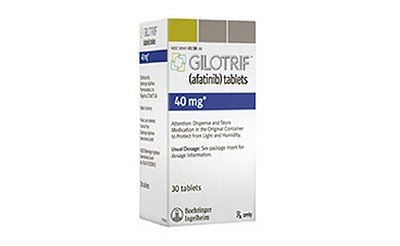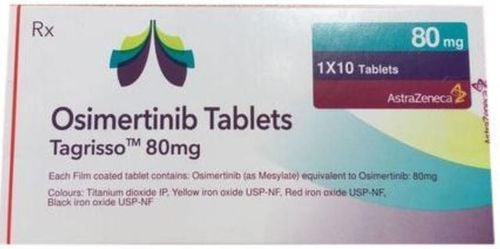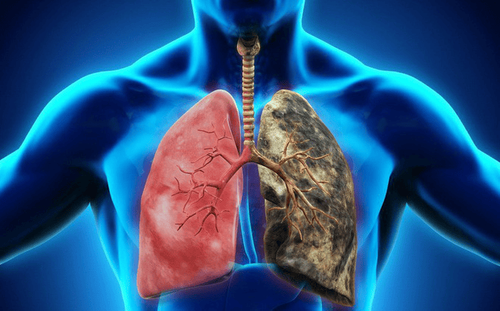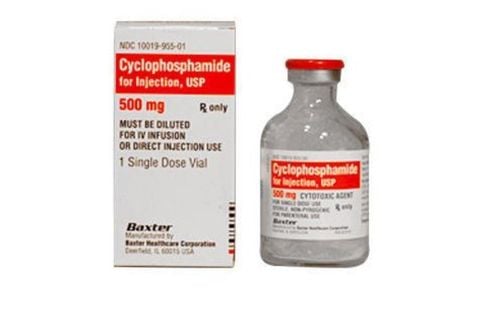This is an automatically translated article.
Radiation therapy for lung cancer uses high-energy X-rays to kill cancer cells or stop them from growing. The radiation targets the lung cancer tumor and kills only the cancer cells in that area of the lung. Read more articles below to understand more about the indications of radiation therapy in the treatment of lung cancer.
1. What is radiation therapy for lung cancer? Is radiation therapy for lung cancer painful? Can radiation therapy cure lung cancer?
Primary radiation therapy is the use of high-energy X-rays to treat cancer. In radiation therapy for lung cancer, the patient will be treated by a linear accelerator (radiator) that produces radiation rays that are directed at the body and this method is also known as external radiation therapy (EBRT - External radiation therapy). beam radiotherapy). Radiation can come from outside the body (external) or from radioactive materials placed directly inside the lung cancer tumor (internal/implant). External radiation is used most often. The treatment will be carefully planned and individualized by doctors and radiophysicists for each individual patient.
Radiation therapy is a common treatment for lung cancer, but can it cure the disease? The success rate of radiation depends on the type used, what it is being used for, the stage of the cancer, and more.
In early stage lung cancer, radiation may be tested as a treatment, especially in people who are not expected to have a good outcome with surgery. While the term "cured" is rarely used.
For cancers that are large or have spread to nearby lymph nodes, radiation may be used to reduce the size of the tumor so that surgery can be performed or to destroy any remaining cancer cells. back after surgery.
As the disease progresses, radiation is often used as a palliative treatment - a treatment designed to relieve symptoms and improve quality of life but not a cure or to prolong life.
Can radiation therapy cure lung cancer?
When looking at survival rates for different types of lung cancer, it's important to note that no two types of lung cancer are alike. Even if two people develop cancer of the same type and stage, they can have significantly different outcomes depending on many factors, such as genetic mutations present in the tumour.
Symptomatic radiation therapy is possible when there is no cure for:
With brain tumors: maintaining the patient's neurological function and preventing neurological complications. For cancer patients with spinal cord compression: help prevent progressive loss of nerve function. With superior vena cava syndrome: radiation helps to release venous obstruction. With painful bone lesions: often relieves symptoms Radiation therapy not only kills malignant cells, but it also destroys healthy cells. Therefore, the risk to healthy tissue must be weighed against the achievable effect. The outcome of radiation therapy will depend on many factors, including:
Characteristics of radiation therapy (mode, duration, volume, radiation dose) Characteristics of the tumor (stage in the cell cycle, oxygenation chemistry, molecular characteristics, inherent sensitivity to radiation) In general, tumor cells are selectively killed due to their high metabolic rate and aggressive proliferation. Normal tissue is better able to repair itself, resulting in more destruction of the tumor
Important factors to consider during radiation therapy include:
Duration of treatment (important) Stool dose (critical) Normal tissue in or near the proposed irradiation field Target volume Radiation beam configuration Dose distribution Mode and radiation energy level best suited to the patient's condition. This radiotherapy plan is also tailored to the kinetics of tumor growth, in order to achieve maximum tumor destruction while minimizing the effects on healthy tissue.
Radiotherapy sessions will have to start with the correct positioning of the patient. The mold or plastic mask will usually be designed to ensure the correct radiotherapy position for the following days of radiation. Laser sensor is used. The total dose of radiation therapy is also divided into different sessions, including large daily doses for about 3 weeks for palliative treatment or using smaller doses, once/day x 5 days/week for 6 to 8 days. weeks for treatment.
2. Indications of radiation therapy in lung cancer
Radiation therapy for lung cancer will usually be indicated for patients in the early stages when the tumor has not invaded and metastasized to many parts of the patient's body.
In addition, radiation therapy for lung cancer is also indicated with the following stages to shrink the tumor, combined with other measures such as surgery to remove the tumor, reduce pain and discomfort for the patient
3. Purpose of radiation therapy for lung cancer
Radiation therapy for lung cancer will have many different purposes depending on the specific condition of the patient, specifically:
Reduce the size of the tumor Combined with surgery to shrink the tumor, which can be surgically removed Easier as well as radiation therapy to destroy the remaining tumors after surgery , reduce the symptoms of lung cancer Prevent cancer recurrence after lung cancer treatment Kill metastatic cells of lung cancer to the brain
4. Side effects of radiation therapy in the treatment of lung cancer
As mentioned above, radiation therapy is a relatively safe method, but it still brings a lot of unwanted side effects of radiation therapy to cancer patients such as:
Destroys all cells in the body Patients in the process of breaking the structure of cancer cells can make the patient feel tired. This symptom usually goes away 2-3 weeks after radiation therapy. Skin irritation, redness and flaking may occur, and this usually occurs during the first 2 weeks of treatment Pain, difficulty swallowing, dry mouth, changes in taste May cause scar tissue Some patients receiving radiation therapy in In the abdomen, diarrhea may occur. In addition, especially in reproductive problems and the patient should note some of the following issues:
Pregnant women, if undergoing radiation therapy for lung cancer, may cause birth defects in the fetus. Therefore, women should not become pregnant during radiation therapy for lung cancer. The sperm quality of men undergoing radiation therapy for lung cancer is also not good, so it is advisable to have children during radiation therapy. Therefore, during cancer treatment and especially radiation therapy for lung cancer, it is very necessary to pay special attention to strengthening the resistance, immune system, and reducing the side effects of chemotherapy and radiation.
Enhance health and improve the body's resistance by gentle exercise, healthy living diet combined with functional foods to support cancer treatment, radiation therapy cancer more effectively and reduce the possible side effects of radiation oncology.
5. Treating lung cancer with radiation therapy
There are two main ways to treat lung cancer with radiation therapy:
External beam radiation therapy (EBRT): This is the most widely used radiation therapy in cancer treatment. Usually, the patient will also be placed in a fixed position on the radiation table, and tools can be used to immobilize the patient while the machine is emitting radiation. The technician will mark the tumor location so that when operating the machine and the radiation does not go out.
Doctors decide the dose of radiation a patient will receive and the best ways to target it based on factors such as: The size of the tumor, the tumor's sensitivity to radiation and the level of radiation. the tolerance of the healthy tissue in the surrounding area...
Brachytherapy: Internal radiation therapy, also known as brachytherapy, is a treatment method by introducing a radioactive source (solid) or liquid) inside the body and come closest to the tumor site. For solid radioactive sources: Devices such as tubes, needles, fibers, or plates are placed near or into the tumor. This is a topical treatment that only affects a certain part of the body.
For liquid radioactive sources, also known as radiopharmaceuticals, there will be effects on the whole body. This method is to send radiation through the blood to the whole body of the patient. Radiation will find and destroy cancer cells. Patients can use radiation by mouth, infusion, and then radiation will be excreted through urine, sweat, and saliva for a while.
Radiation therapy uses more concentrated radiation than external radiation therapy. After the treatment is finished, the remaining radiation in the body does not harm healthy cells.
Oncology Center - Vinmec International General Hospital is modernly built according to international standards, using a multi-specialist approach model in diagnosis, choosing the right treatment regimen for each patient, contribute to comprehensive patient care. Vinmec Oncology Center has outstanding advantages in cancer treatment such as:
Vinmec Convergence of experts in radiation therapy, chemotherapy and surgery, equipped with modern facilities. The most modern radiotherapy planning system and Truebeam in Southeast Asia, with the outstanding advantage of minimizing the effects of radiation on benign tissues compared to X-rays, reducing irradiation time and the risk of adverse effects. side effects for patients.) effective treatment of common cancers: Lung, Head, neck, breast....
Please dial HOTLINE for more information or register for an appointment HERE. Download MyVinmec app to make appointments faster and to manage your bookings easily.
References: verywellhealth.com, cancer.org, oncolink.org













